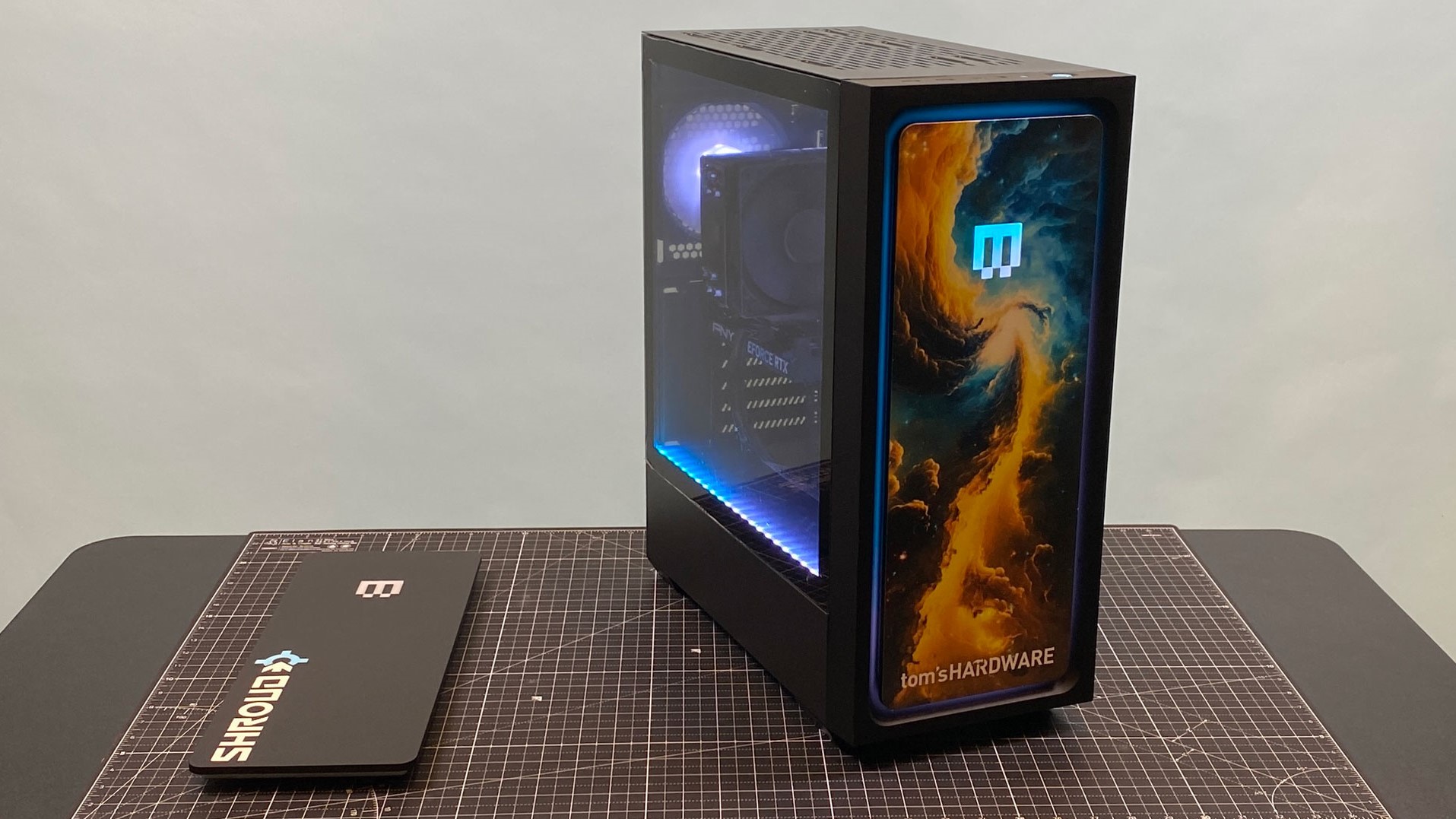
Entry-level builds, even budget builds, have crept up in price. Often times, despite paying $1,000 or more, you can still wind up with something that feels cheap. That's not the case with the Maingear MG-1 Silver ($1,149 to start, $1,249 as tested), a desktop that feels premium, even if it has the performance of a starter rig.
The Intel Core i5-13400F and Nvidia GeForce RTX 4060 don't have the power of some of the best gaming PCs, but the system plays games well enough, especially if you're willing to adjust settings. We only found one component – the SSD – to be subpar. But that's replaceable, or at least can be augmented with another one down the line.
But most importantly, you still get a fairly premium chassis, meticulous cable management, and a sense that this is a computer you can grow with. When you're ready to spend more or learn to upgrade yourself, this case has nothing proprietary, and it will be able to grow with you.
Design of the Maingear MG-1 Silver
Maingear's MG-1 Silver is, in many ways, a classic mid-tower, though it's compact enough to fit on most desks. The chassis is a black aluminum box with a window on the left side panel to let you see your parts and RGB lighting. The blue power and LED buttons on top serve as small accents that you won't see much.
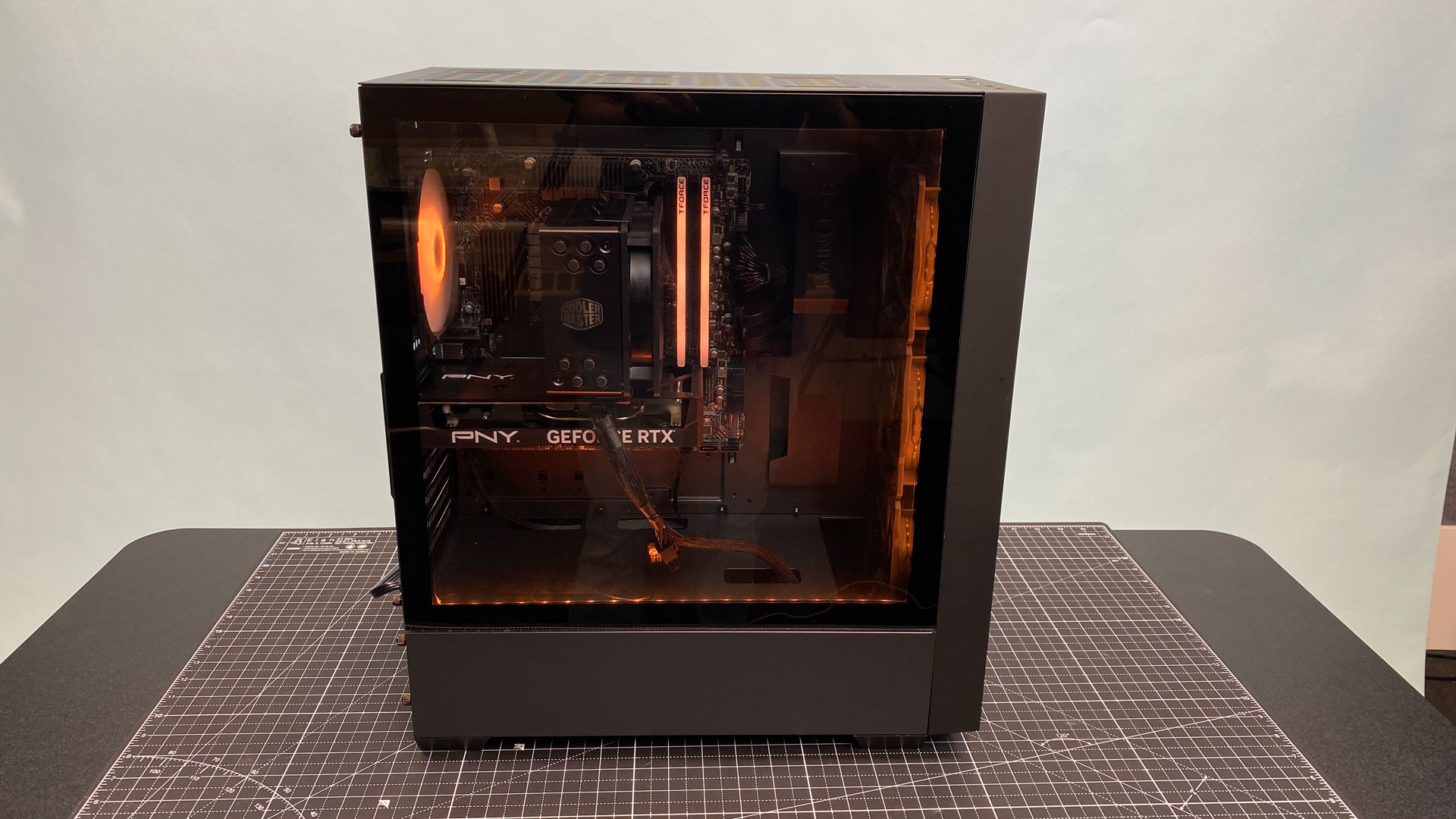
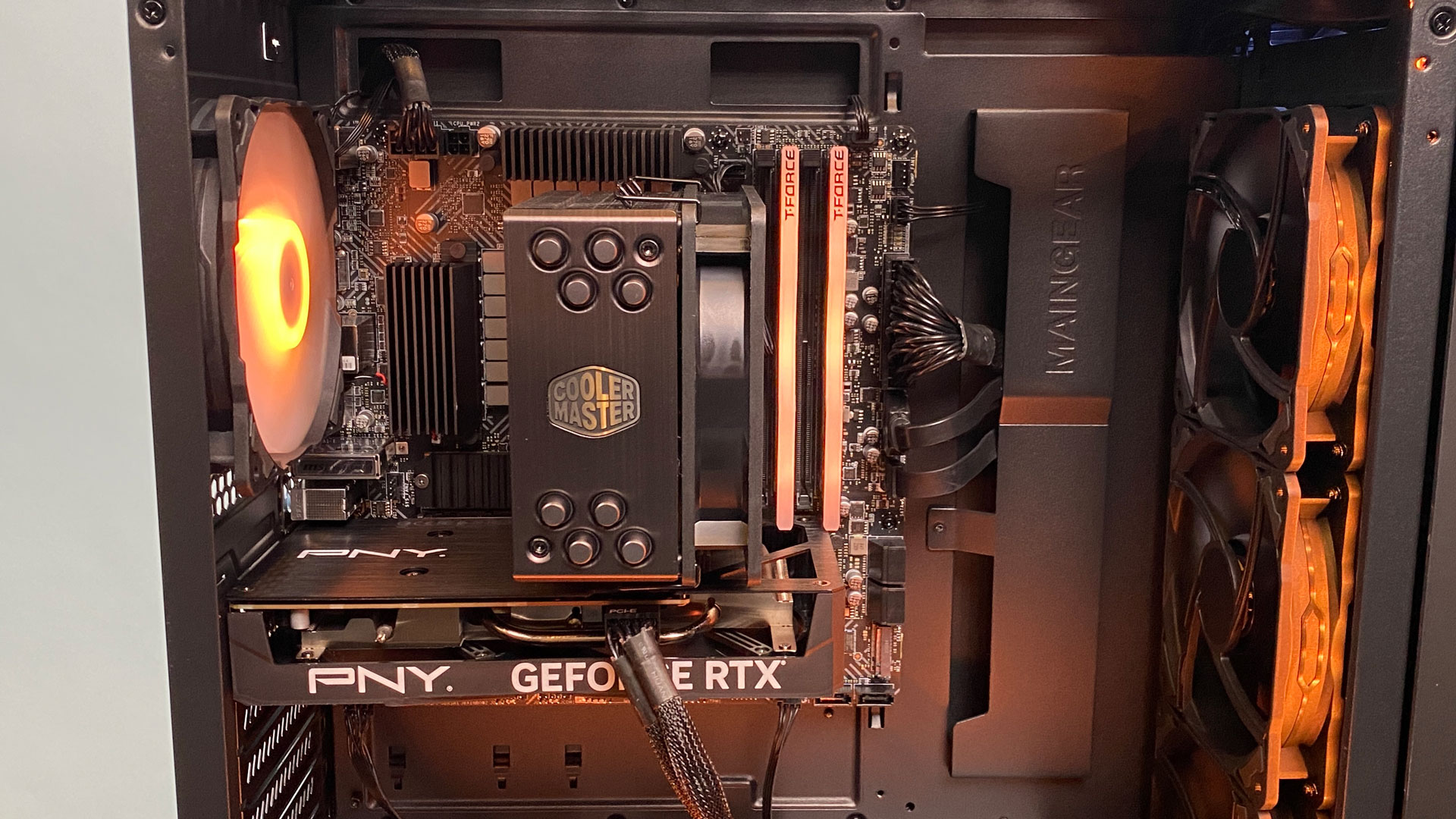
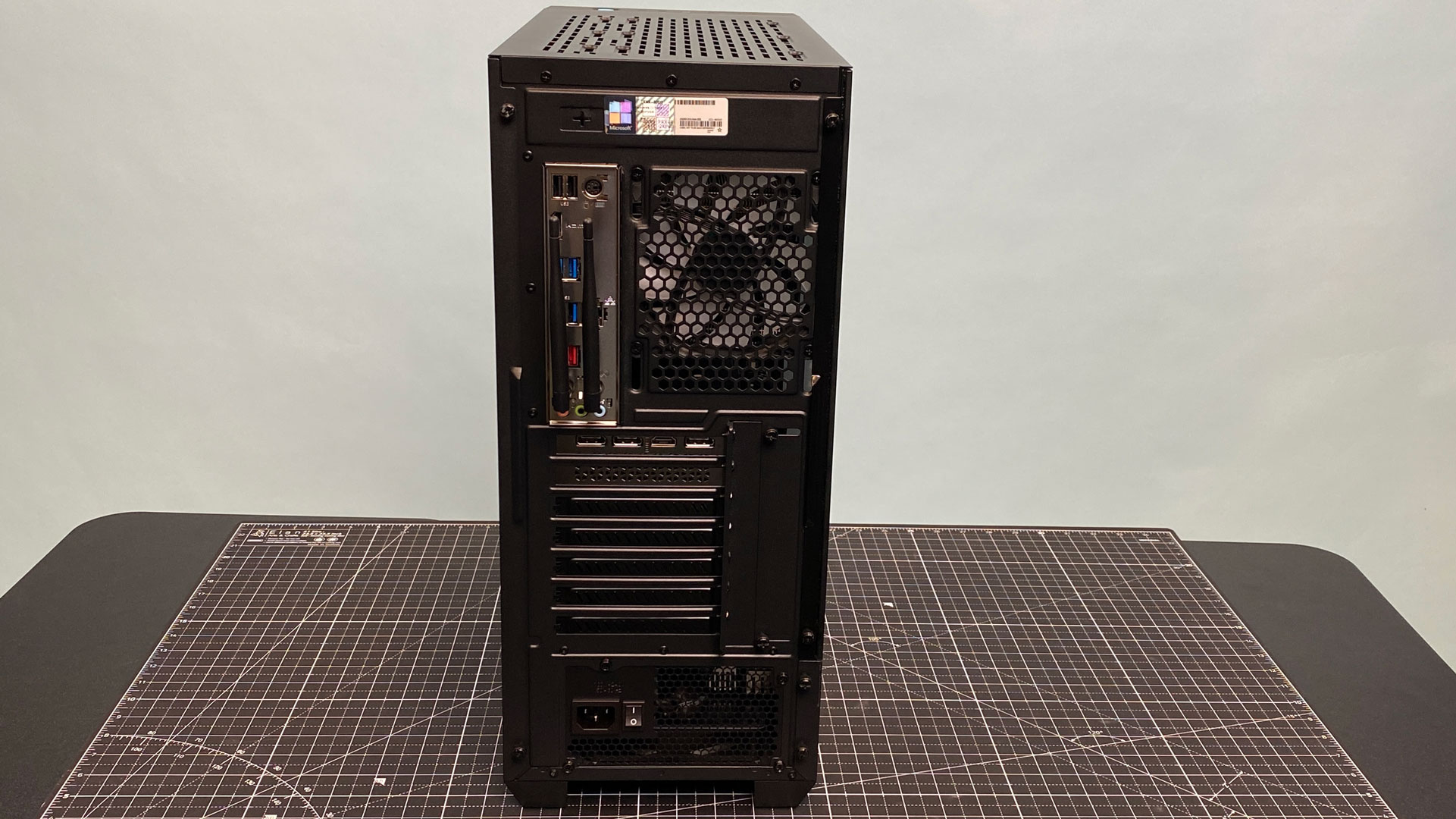
At 19 x 16.88 x 8.13 inches, the Maingear MG-1 is fairly compact. The Alienware Aurora R16, newly redesigned to be a more conventional size, is 18.05 x 16.5 x 7.76 inches, which is slightly smaller.
The faceplate on the front of the Maingear system attaches magnetically and can easily be pulled off and reattached. A small connector on the bottom of the faceplate provides power to RGB lighting behind the faceplate (which creates a glowing effect around it) and in the Maingear logo). Our review unit is Maingear's "Shroud Edition," named after the pro esports player and streamer, so it included a black front panel with Shroud's logo on it. It also included a limited time "Into the Wild" faceplate based on his latest fashion line. But you can also design your own faceplate ($99 each), and Maingear tossed one it made in our box, which featured a magical space theme and the Tom's Hardware logo.
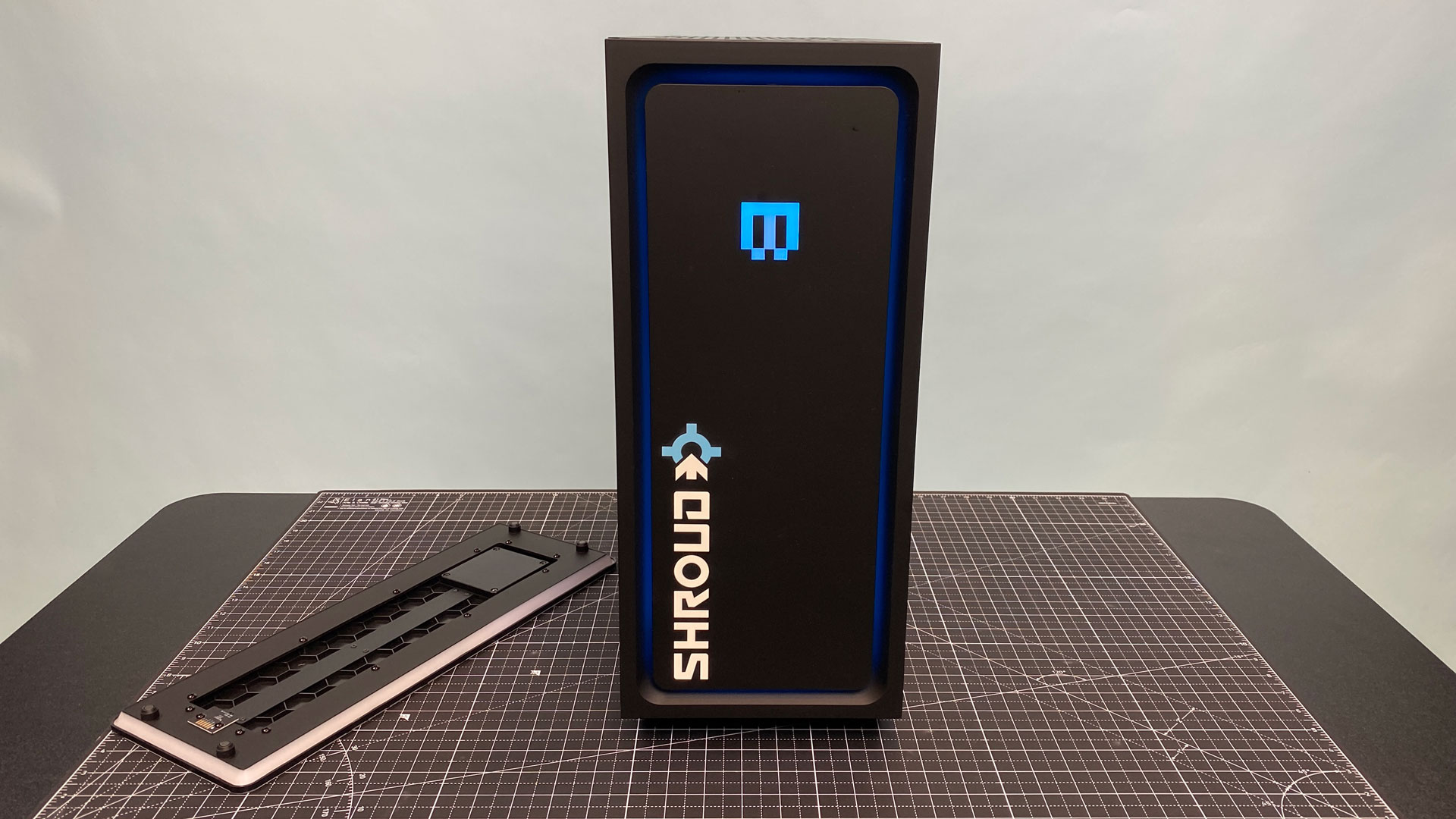
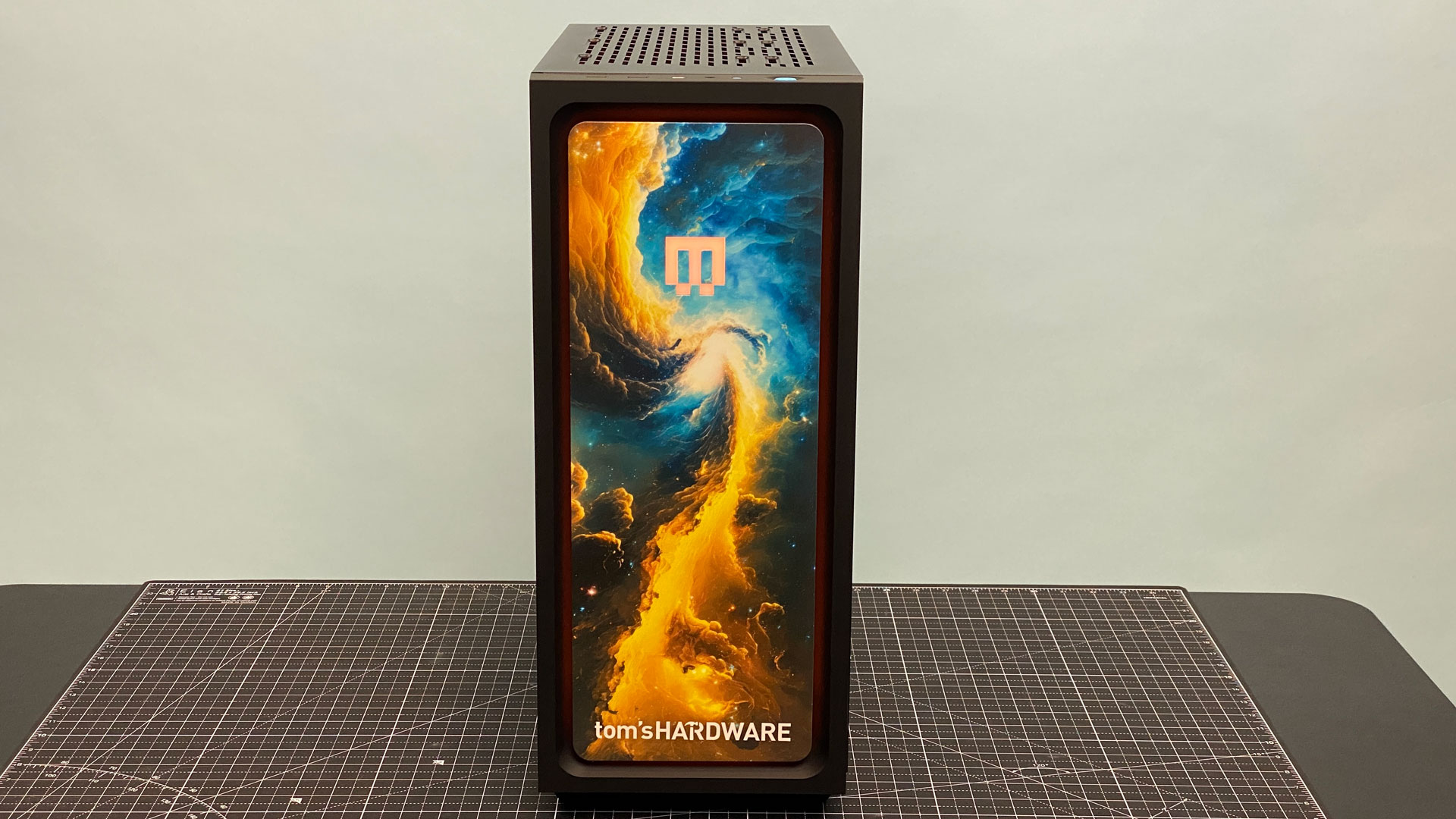
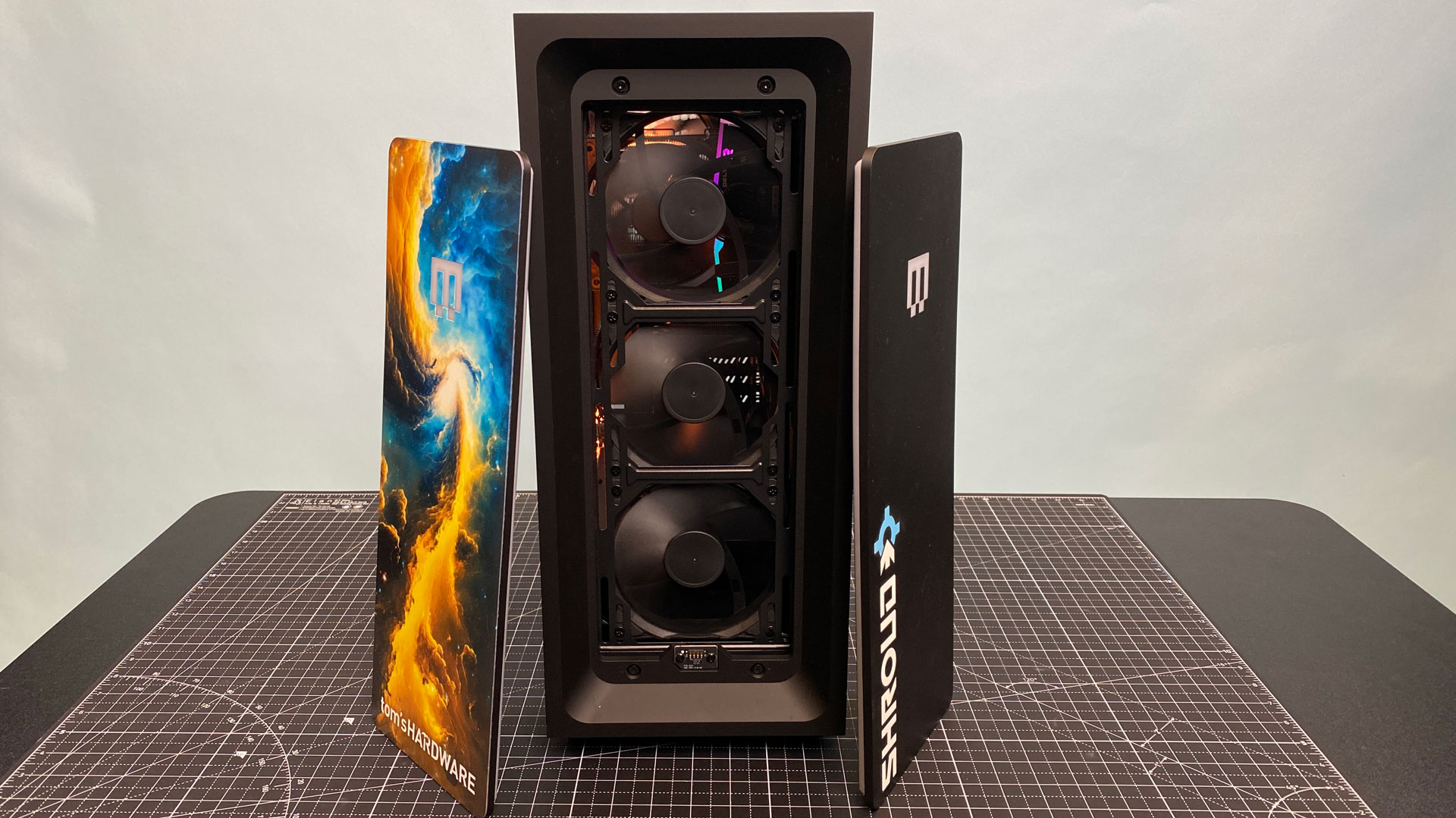
That front panel sits in front of three 120 mm intake fans, while another fan in the back exhausts heat from the case. Our unit featured a Cooler Master Hyper 212 air cooler, but there is room in the top of the chassis for up to a 360 mm radiator for an all-in-one cooler in more expensive configurations. Regardless of the lack of fans up top, I wish there were some sort of dust filter in place. In fact, I wouldn't mind seeing dust filters by the front intake fans, either. (The only one I spotted was underneath the power supply).
Maingear's RGB is powered by a controller mounted on the right side of the case, and can be adjusted with a remote control. While this let me change colors, brightness, and patterns, it only adjusted the rear fan and a lightstrip. The other parts with RGB, like the RAM, didn't work with the remote, however. That led me to install MSI Center with its Mystic Light add-on for lighting control. While our motherboard doesn't have lighting, it can control the RAM and let me match it to the rest of the system. (And it takes a lot to make me want to use MSI Center!).
While our review unit came with a micro-ATX motherboard, there's room in the system for a larger, full-sized ATX board.
Maingear MG-1 Silver (Shroud Edition) Specifications
Ports and Upgradeability on the Maingear MG-1 Silver
On the front panel, there's a pair of USB 3.2 Gen 1 Type-A ports and a USB 3.2 Gen 2 Type-C port, as well as a 3.5 mm headphone/mic jack. There's also a dedicated button for switching between RGB states next to the power button.
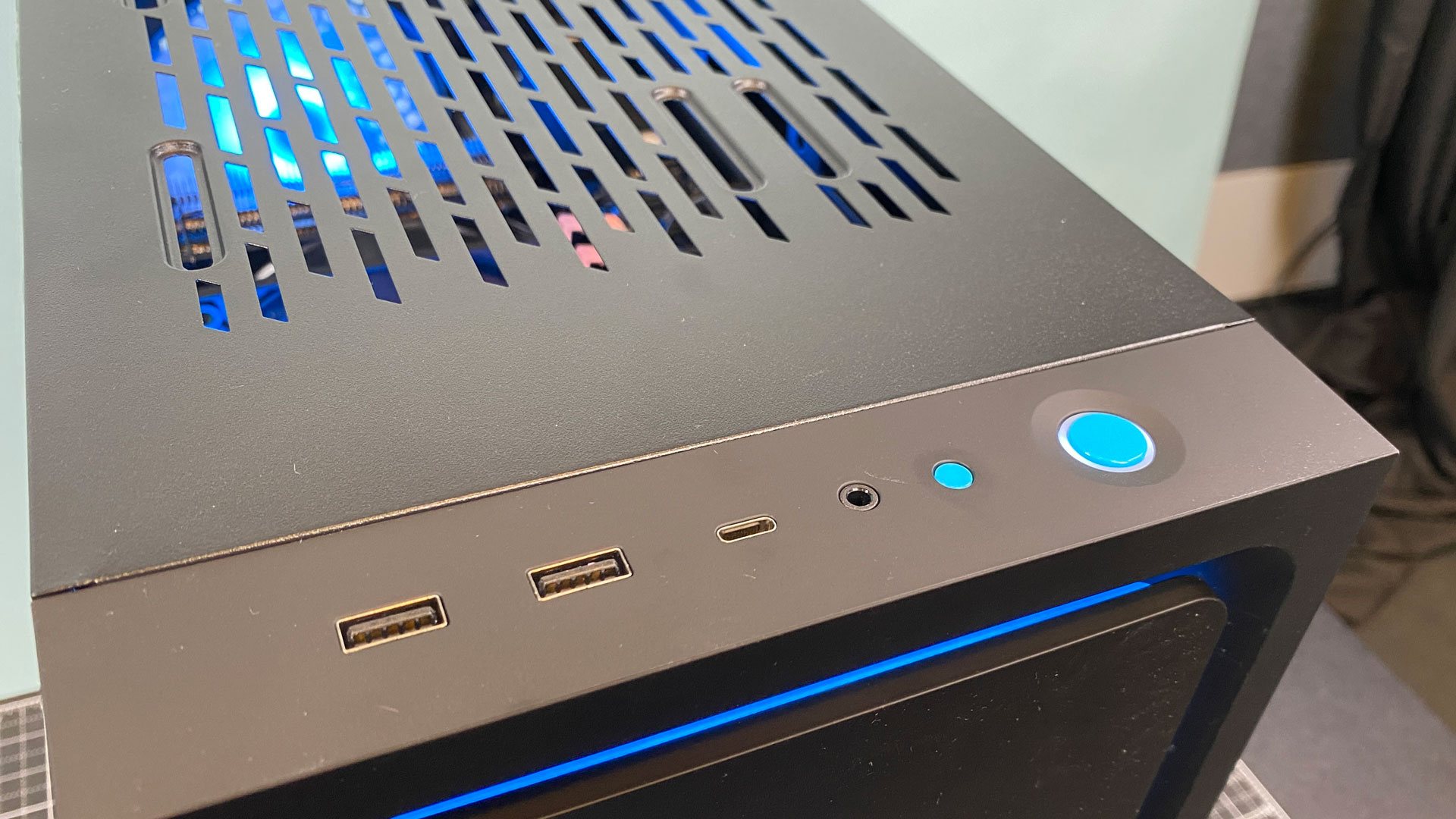
The back panel will depend on which motherboard you get. On the rear of the MSI PRO B660M-A CEC WiFi DDR4 in our review unit, that meant USB 3.2 Gen 2 Type-A, USB 3.2 Gen 2 Type-C, four USB 3.2 Gen 1 Type-A, ports, two USB 2.0 ports, Ethernet, HDMI, and audio connectors.
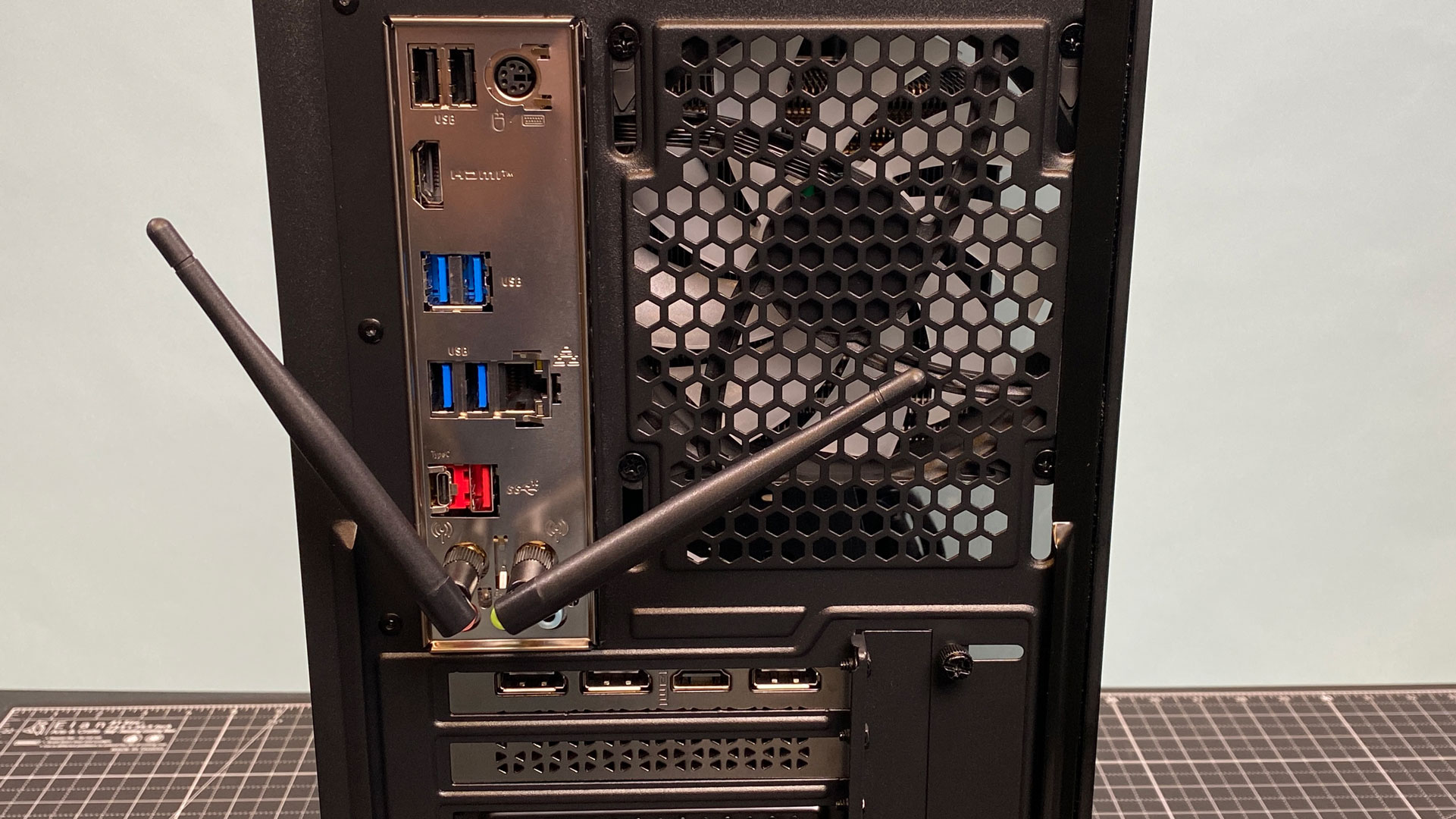
For video, that also depends on the GPU. The RTX 4060 in the Silver we tested has a single HDMI port and four DisplayPort connectors.
Opening the MG-1 is simple. The left side panel, with the glass window, is held on by two thumb screws. With those removed, it just slides off. It's the same for the right side panel, but the entire side comes off there. Cable management is all neat and tidy; whoever built this had more patience than I do. Some of that has to do with the RGB and fan controller in the back of the system, with much of the cable mess tied and connected there, rather than in front of the motherboard.
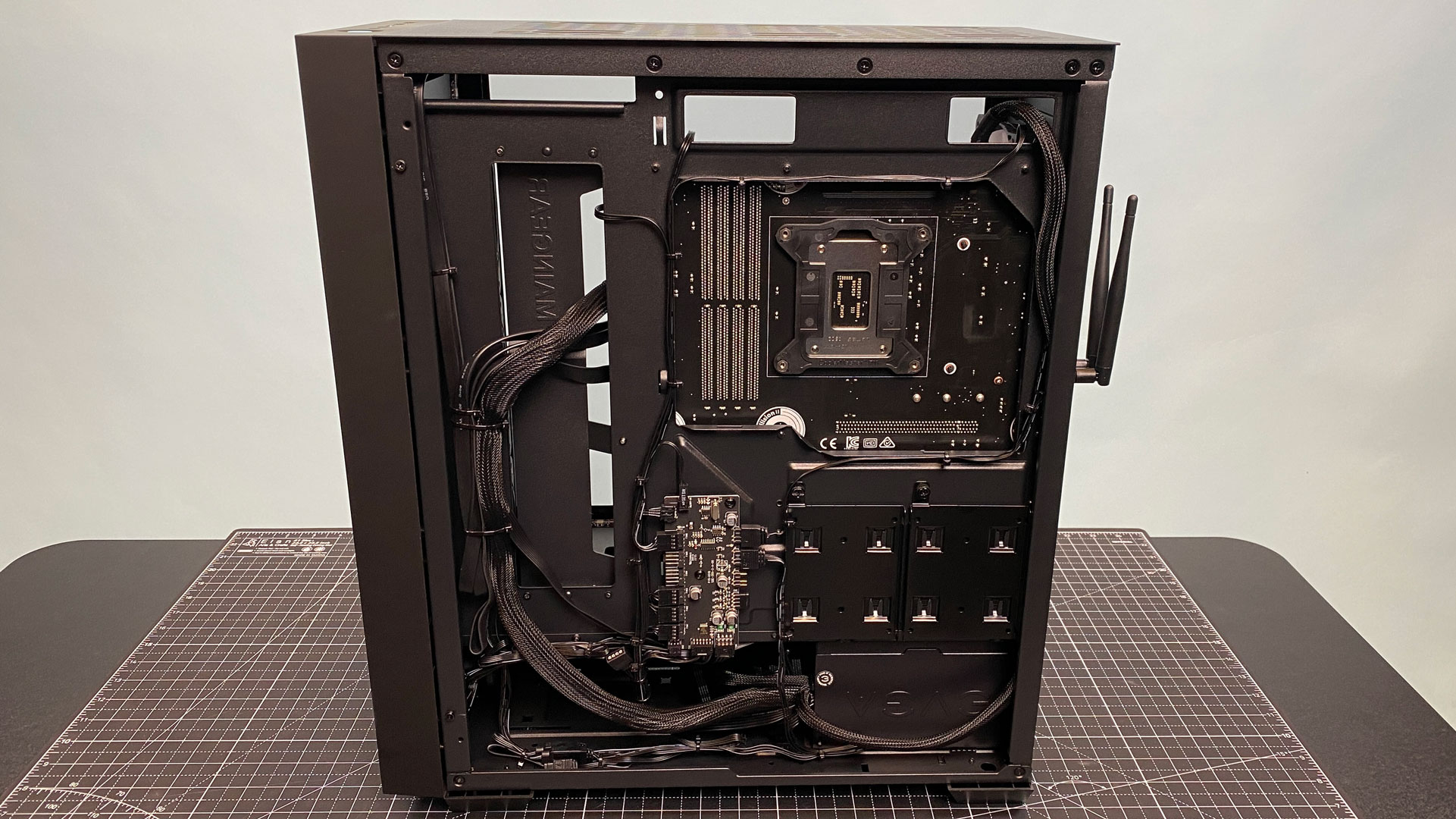
When you're in, upgrading the MG-1 is much like changing parts on anything you've built yourself. There's nothing proprietary here. That means you have full access to the motherboard, cooler, fans, RAM, CPU, GPU, power supply, or anything else you'd want to change within the case. Some quick upgrades you could make in our review unit include adding a second SSD (there's another slot on our motherboard and mounts on the back for SATA drives, though with the way the power and data cables are tied up, you may have a hard time getting them hooked up) or adding more RAM. Eventually, you could replace the entire motherboard if you wanted to switch CPU platforms.
Gaming and Graphics on the Maingear MG-1 Silver
Most companies that lend gaming PCs for review don't send the low-end configuration (presumably, they want to only be affiliated with the most powerful options). So when Maingear sent the MG-1 Silver with an Intel Core i5-13400F, 16GB of RAM, a GeForce RTX 4060 and 512GB m.2 NVMe SSD, we had a limited test pool for comparison. So here, we're comparing it to the recently reviewed Alienware Aurora R16, with a Core i7-13700F, 32GB of DDR5 RAM and an RTX 4070. It's not exactly competition, but shows what you can get if you have an extra $600 to spend.
I used the Maingear to play Returnal, and while the game suggested low settings, it did decently on the high preset, even at 4K. With that combination of graphics settings and resolution, it still ran between 48 and 59 frames per second in early areas of the game, hitting the lower ranges in combat with aliens.
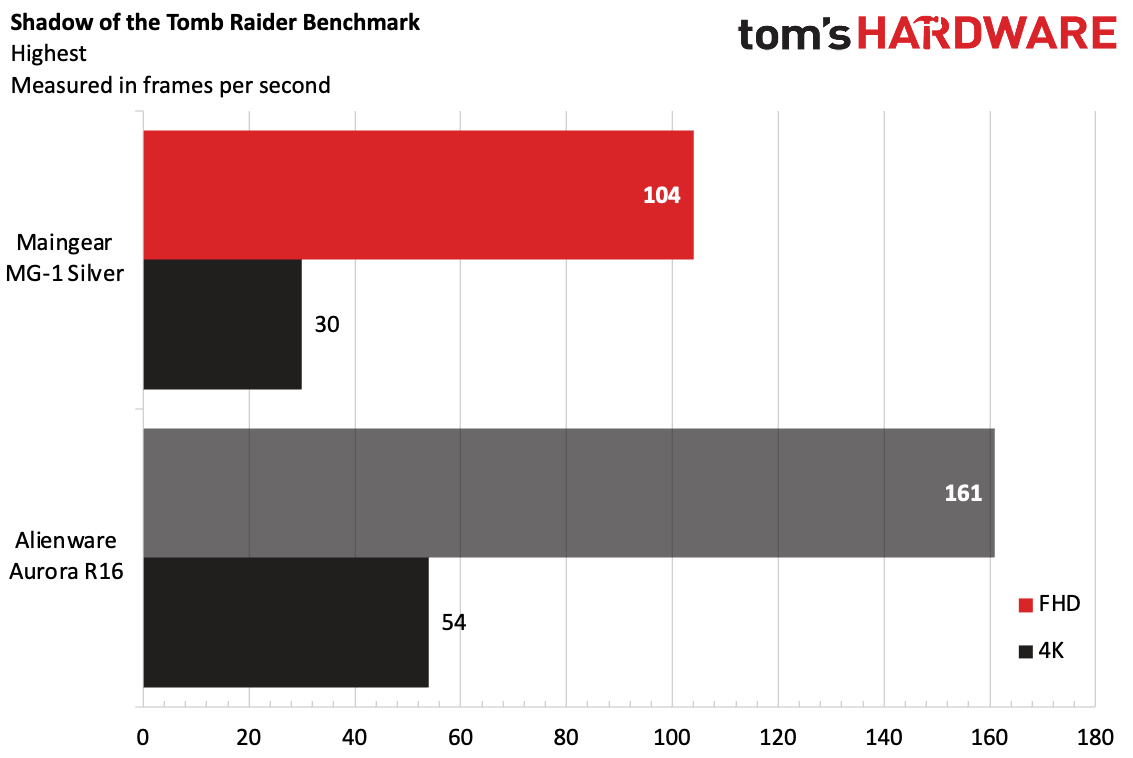
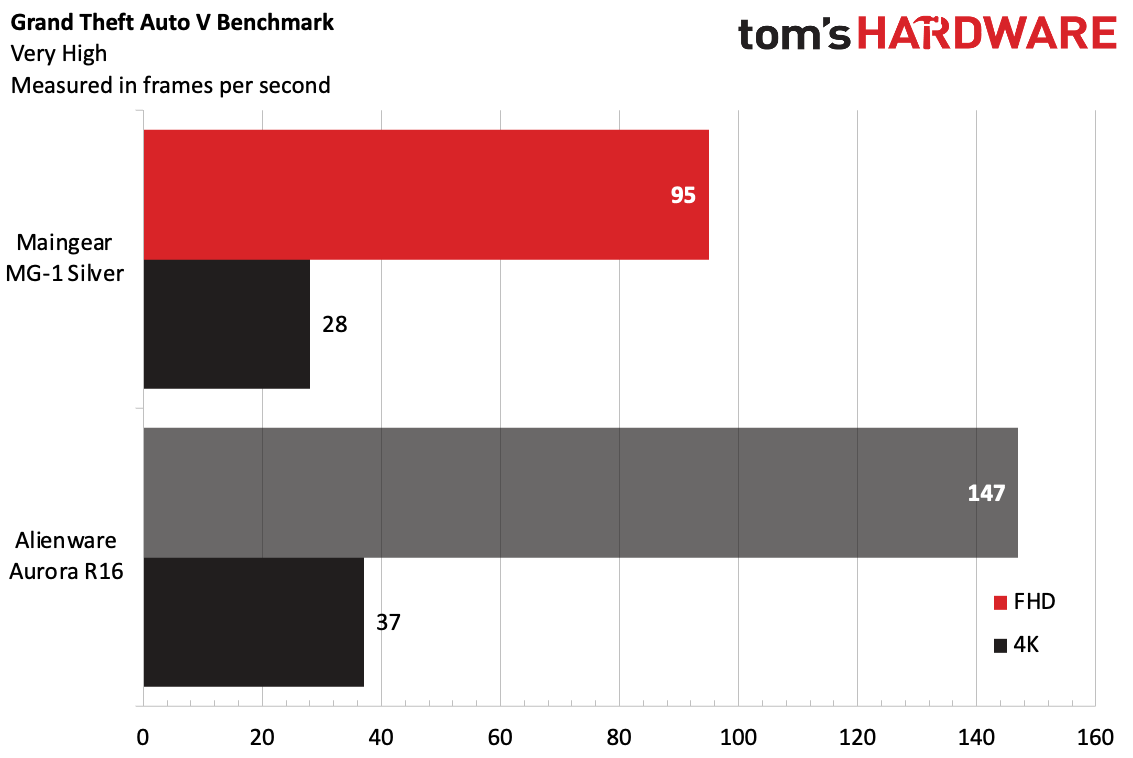
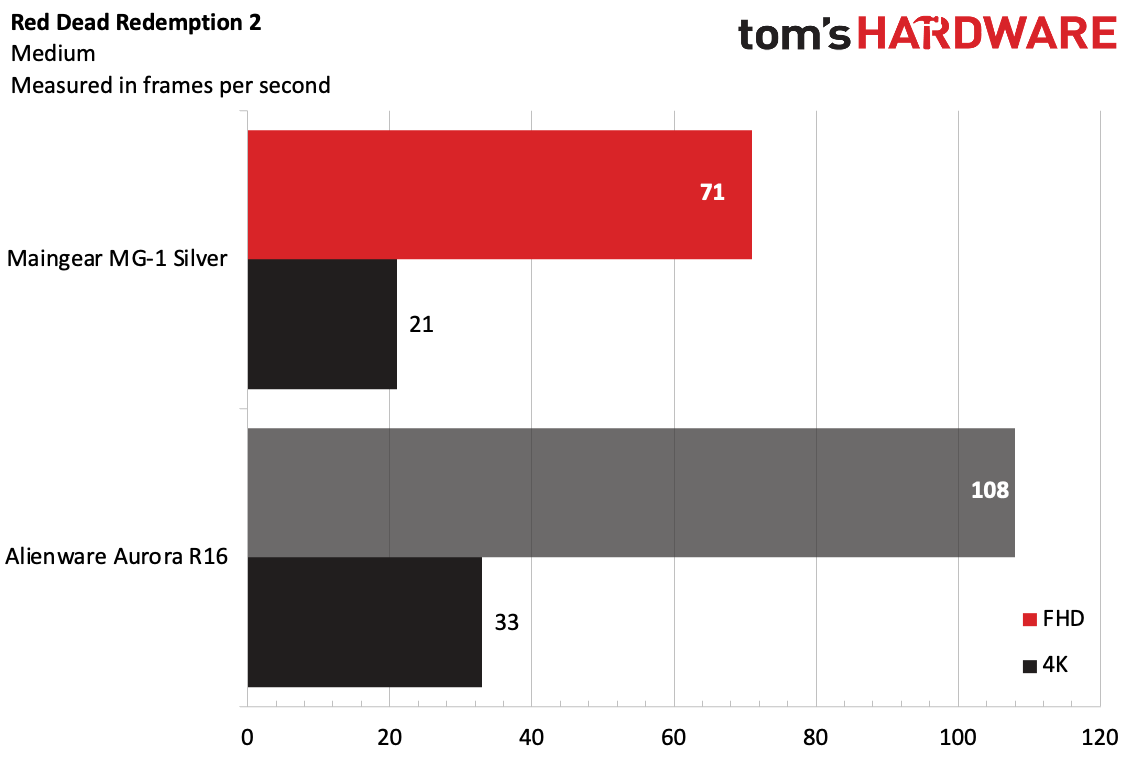
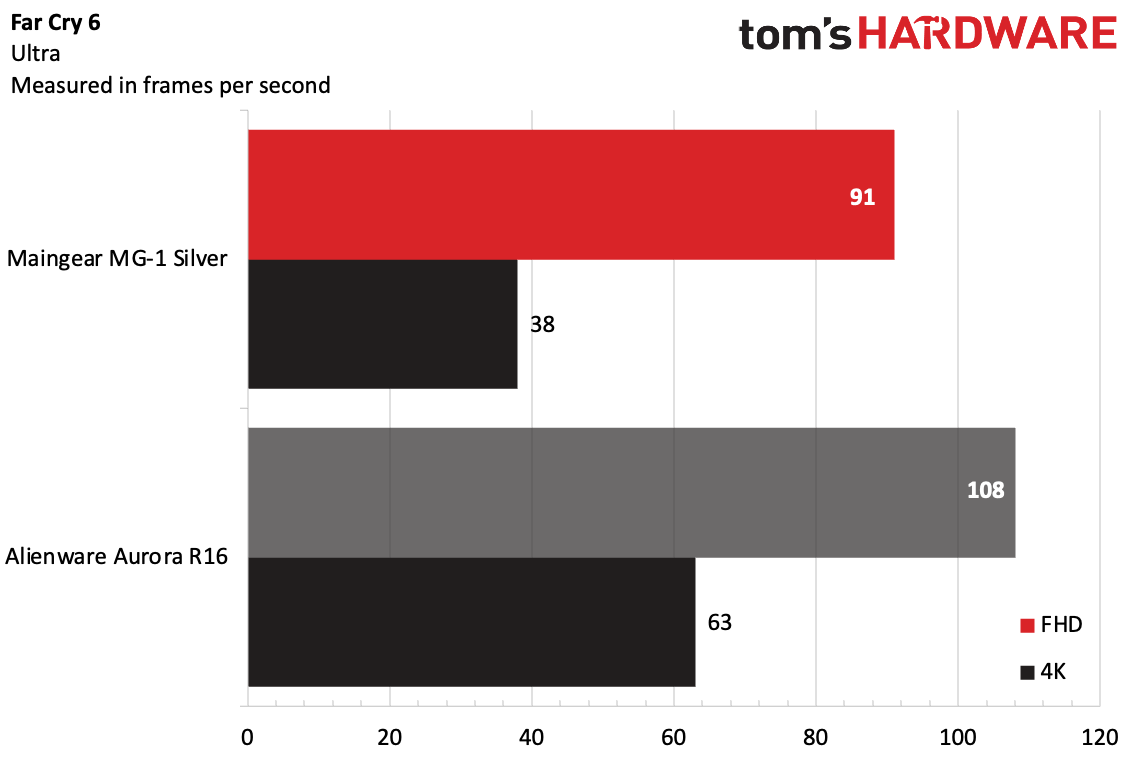
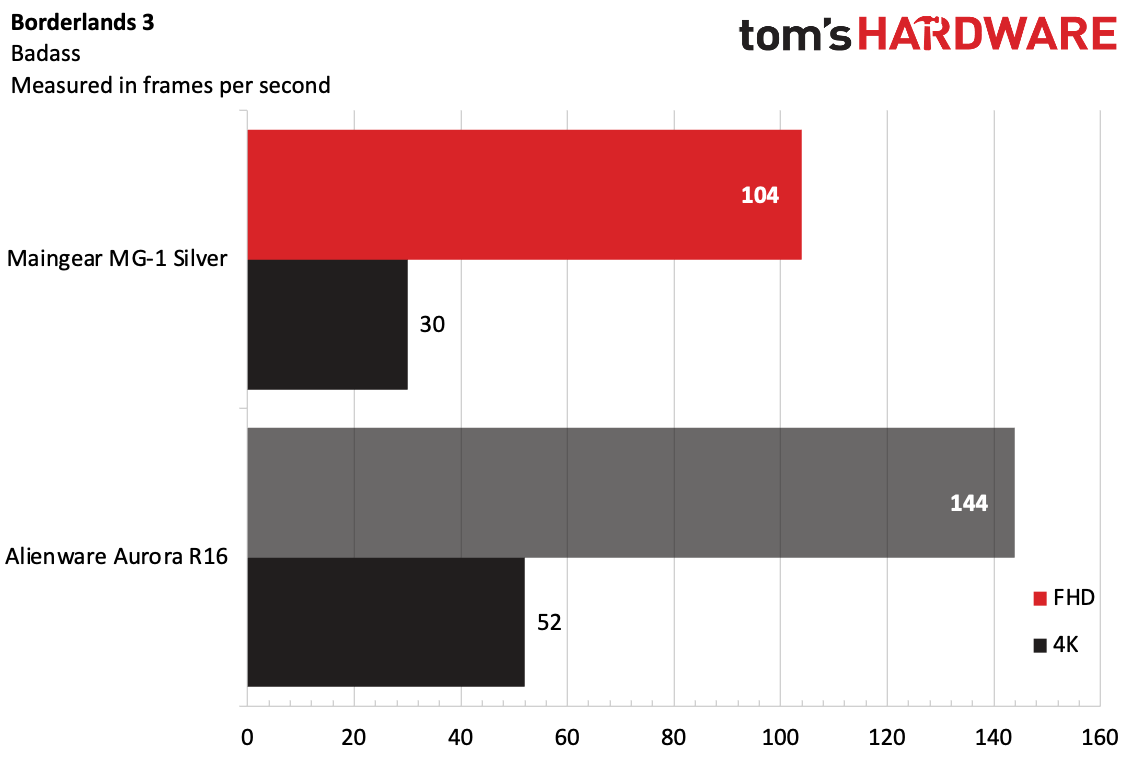
If you have a high refresh rate monitor, you may want to turn down some settings, but the MG-1 Silver performed decently in our benchmarks.
On Shadow of the Tomb Raider (highest settings), the Maingear hit 104 fps at 1080p and eked out 30 fps at 4K.
When it came to Grand Theft Auto V (very high), the game hit 95 fps at 1080p and 28 fps at 4K.
Far Cry 6 (ultra) was the Maingear's best attempt at 4K, hitting 38 fps, but you might be more comfortable with the 91 fps at 1080p.
Red Dead Redemption 2, at medium settings, is still a challenge for many computer. The Maingear reached 71 fps at 1080p, but an unplayable 21 fps at 4K.
On Borderlands 3 (badass preset), the Maingear reached 104 fps at 1080p and a flat 30 fps at 4K.
To stress test systems, we run the Metro Exodus benchmark at RTX settings at 1080p for 15 runs, simulating about half an hour of game play. The Maingear achieved an average frame rate of 57 fps and was largely consistent within a few decimal points throughout the tests. The CPU's six performance cores averaged 3.33 GHz, while the four efficiency cores ran at 2.62 GHz. The CPU package measured 43.1 degrees Celsius. The GPU ran at 1.9 GHz and measured 53.55 degrees Celsius.
Productivity Performance
Many people use their gaming PCs as productivity machines as well. The Intel Core i5-13400F and RTX 4060 in the Maingear rig should be plenty for most everyday tasks, though the SSD leaves something to be desired. It's unsurprising that the Maingear lost out to the Alienware Aurora in these tests, with its more powerful 13th Gen Core i7, but it’s also a more expensive machine.
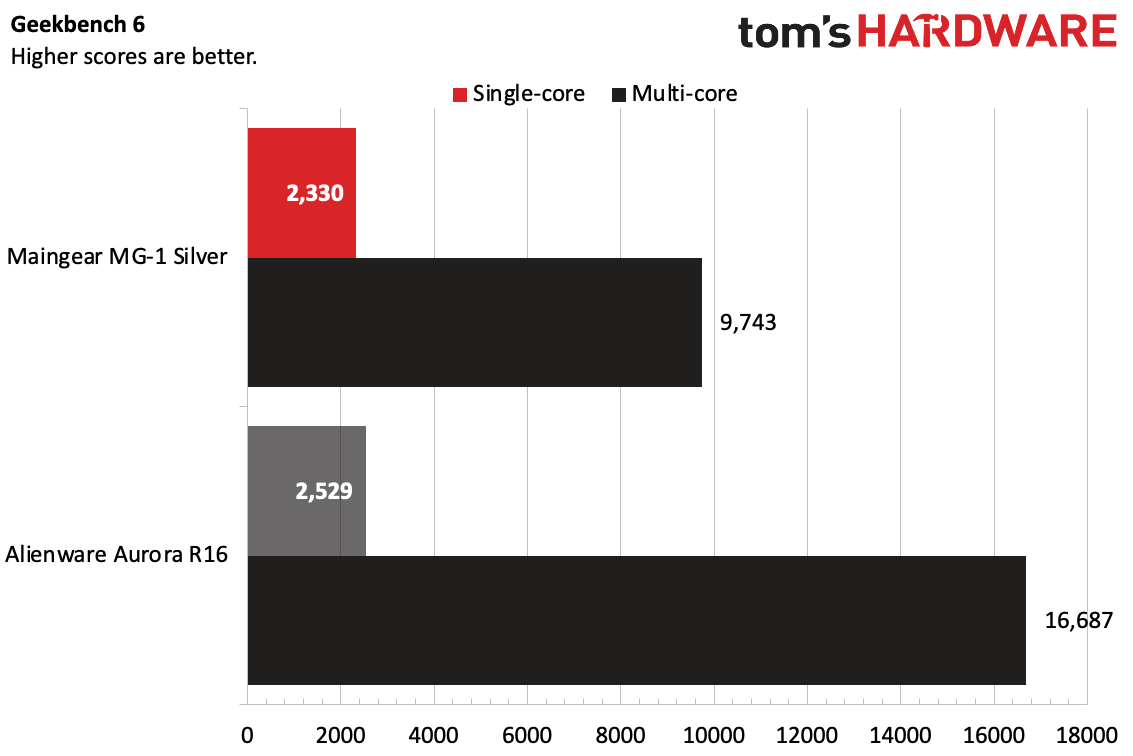
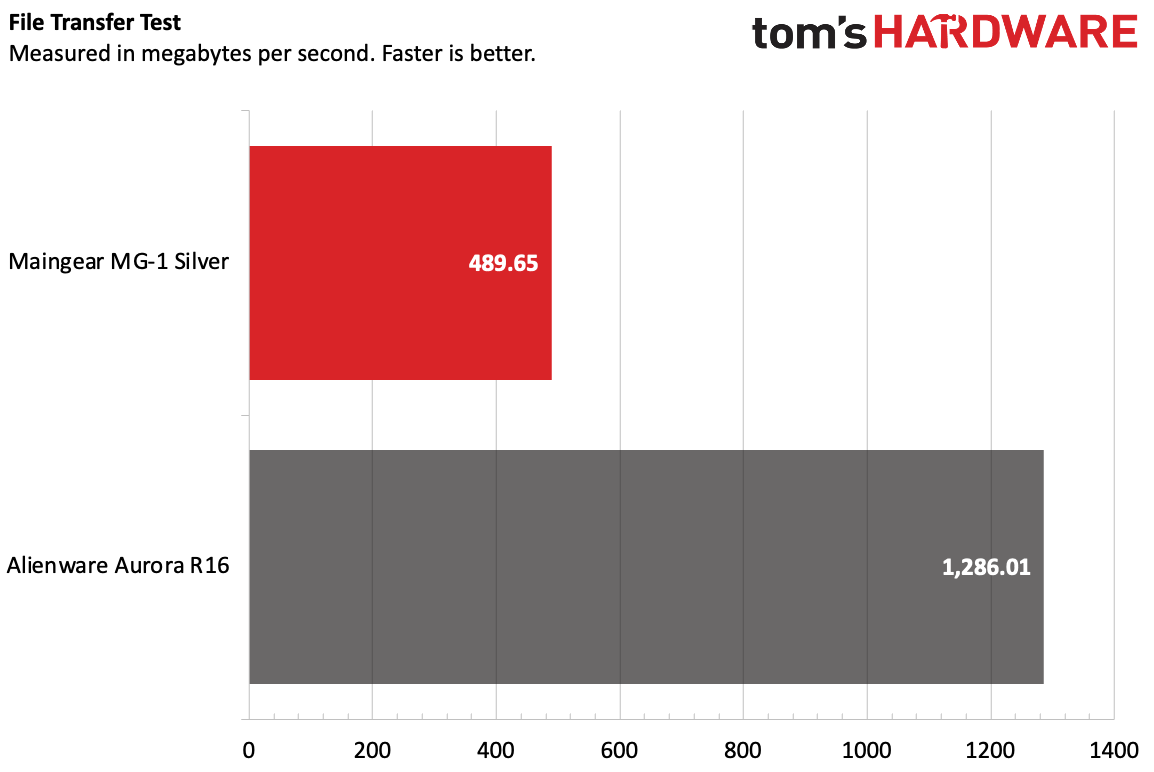
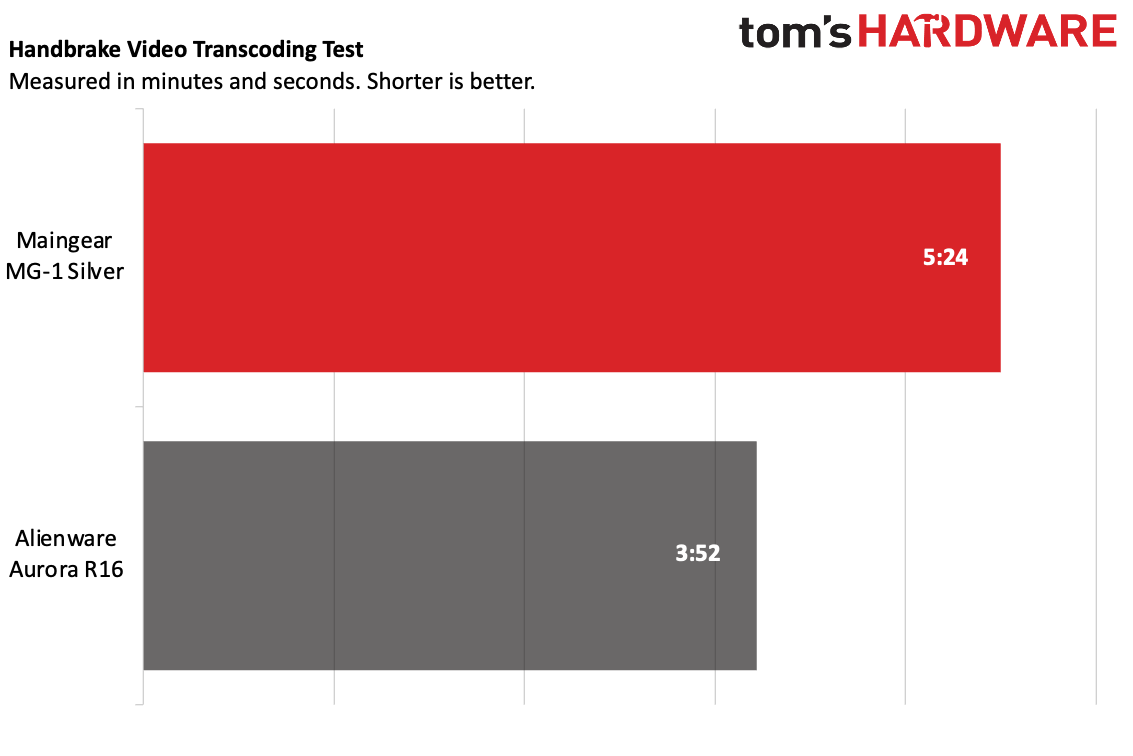
On Geekbench 6, a CPU-heavy synthetic benchmark, the MG-1 Silver earned a single-core score of 2,330 and a multi-core score of 9,743. The difference in single-core between the MG-1 and the Alienware wasn't bad, but the i7, with more cores, reached 16,687 points.
The big negative for the Maingear rig was on our file transfer test. The MG-1's 512GB Solidigm P41 Plus copied 25GB of files at 489.65 MBps, which is slower than our hopes for any PC these days. When we reviewed that drive, we said it had "largely mediocre performance."
When we used Handbrake to transcode a 4K video to 1080p, it took the MG-1 and its Core i5 5 minutes and 24 seconds to complete the task. The more powerful, pricier Alienware did it in 3:52.
Software and Warranty on the Maingear MG-1 Silver
For better or worse, our Maingear MG-1 Silver review unit came without much software preinstalled, other than what you need for the Nvidia GPU. I do wish the RGB controller had some software. If I wanted something for any of the components, I'd need to add it myself.
That being said, there's really no bloatware. The only real junk comes from the Windows 11 side of things, including links in the start menu to install apps like Whatsapp, Netflix, Prime Video, Messenger, and Instagram.
By default, Maingear includes a 1-year warranty and "lifetime support." You can upgrade to a 2 or 3-year warranty for $99 and $199, respectively.
Maingear MG-1 Silver Configurations
Maingear offers its MG-1 with a wide variety of configuration options, as well as a series of pre-built, ready-to-ship configs.
We tested the Maingear MG-1 Silver Shroud Edition, with an Intel Core i5-13400F,
MSI PRO B660M-A CEC WiFi DDR4 motherboard, 16GB of RAM, a
GeForce RTX 4060 and 512GB Solidigm P41 Plus m.2 NVMe SSD. The Shroud Edition moniker adds the eponymous esports player and streamer's logo to the front panel and also includes a secondary front panel matching his latest clothing collection. All of that will cost you $1,249.
If you ditch the Shroud Edition for the regular MG-1 Silver, you'll get the exact same PC, but without Shroud's logo or the extra faceplate. That will save you $100 at $1,149, making it the one I would get.
There are numerous other options, including Gold (bumps up to an RTX 4060 Ti, $1,299 for standard, $1,399 for Shroud edition) up through the most expensive Ultimate edition (a Core i9-13900K, RTX 4090, 32GB DDR5 RAM, 2TB SSD, a 1,000W PSU, and a 360mm AIO liquid cooler) which starts at $4,599 (or $4,699 for the Shroud edition).
Mangear also sent an extra faceplate featuring the Tom's Hardware logo with our loaner. That customized front panel costs $99, should you want to add your own look.
Bottom Line
For those who are just getting into PC gaming, or don't have the budget to splurge on the top of the line, the Maingear MG-1 Silver is impressive. Sure, it doesn't have all of the power, bells and whistles that PC gaming can offer, but it's also less than $1,500. And because the design hsa no proprietary parts like some computer makers use, you have the ability to upgrade everything you want in this case in the future. You could bump up, either through Maingear's own options or for something like the Alienware Aurora R16, but those upgrades raise the price pretty quick.
One note on price: I don't know who the Shroud edition is for. Unless you're a superfan of Shroud, as either a streamer or esports pro, I don't know why you'd want special edition Shroud faceplates that add $100 to the cost. Especially when you can submit your own design for the same price. Me? I'd rather have that money for games, or a faster, roomier SSD.
The cable management is meticulous, perhaps too much so (you'll want to get a power cable out eventually), and Maingear could add a few dust filters to the system in order to keep things cleaner in the long run. But despite being a fairly cheap gaming system, outside of a sluggish SSD, the Maingear MG-1 Silver never feels like one.







